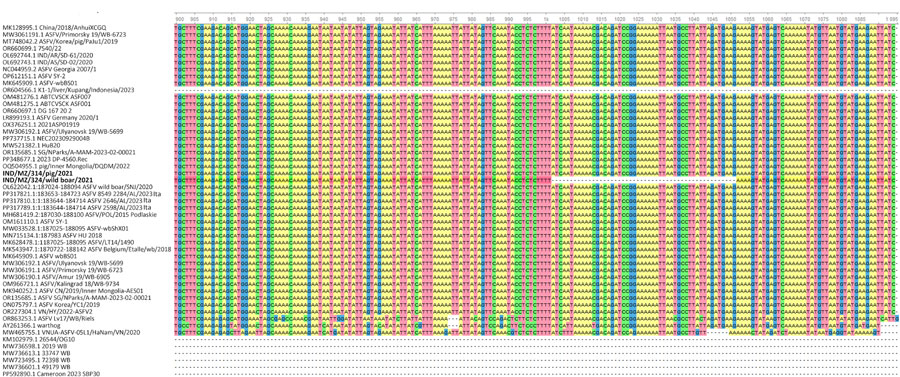Volume 31, Number 8—August 2025
Research Letter
Complete Genome Analysis of African Swine Fever Virus Isolated from Wild Boar, India, 2021
Figure 2

Figure 2. Complete genome analysis of ASFV isolated from wild boar and domestic pig, India, 2021. A 50-nt deletion is observed in the MGF-360–21R gene of the ASFV isolate obtained from a wild boar in Mizoram, India, compared with ASFV isolates derived from domestic pigs in India. Bold isolates are from this study. GenBank accession numbers are provided. ASFV, African swine fever virus.
1These authors contributed equally to this article.
Page created: May 31, 2025
Page updated: July 22, 2025
Page reviewed: July 22, 2025
The conclusions, findings, and opinions expressed by authors contributing to this journal do not necessarily reflect the official position of the U.S. Department of Health and Human Services, the Public Health Service, the Centers for Disease Control and Prevention, or the authors' affiliated institutions. Use of trade names is for identification only and does not imply endorsement by any of the groups named above.